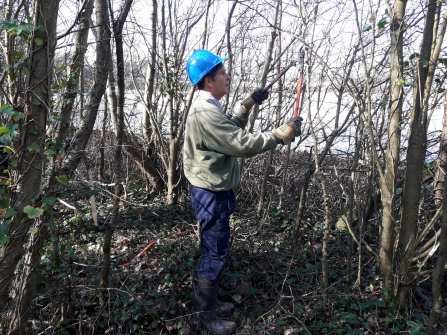This group of enthusiastic volunteers has been running for over ten years and some of the current members have been there since its inception. The group carries out practical conservation tasks using hand tools to create and manage wild places. They are a crucial part of the Upstream Thinking project, which works with farming communities to help make changes which benefit both wildlife and water quality.
Millennium Woods, on the outskirts of Penzance is looked after by Penwith Environmental Network, with support from Cornwall Council’s Green Infrastructure for Growth project. GI4G hopes to manage the woodland using traditional techniques which benefit wildlife. One such technique is to “lay” an existing strip of small trees such as hawthorn, blackthorn, field maple and ash into a hedge.
The Trust’s volunteers were joined by others from RSPB, many of whom had never layed a hedge before, but after being shown the basic principle of partially cutting through the stem of the tree until it can be lowered to an angle of around 30 degrees, bending rather than breaking, they were all eager to have a go. This traditional skill allows a thin strip of bark to remain intact so it won’t die but live on and grow as part of the hedge.

